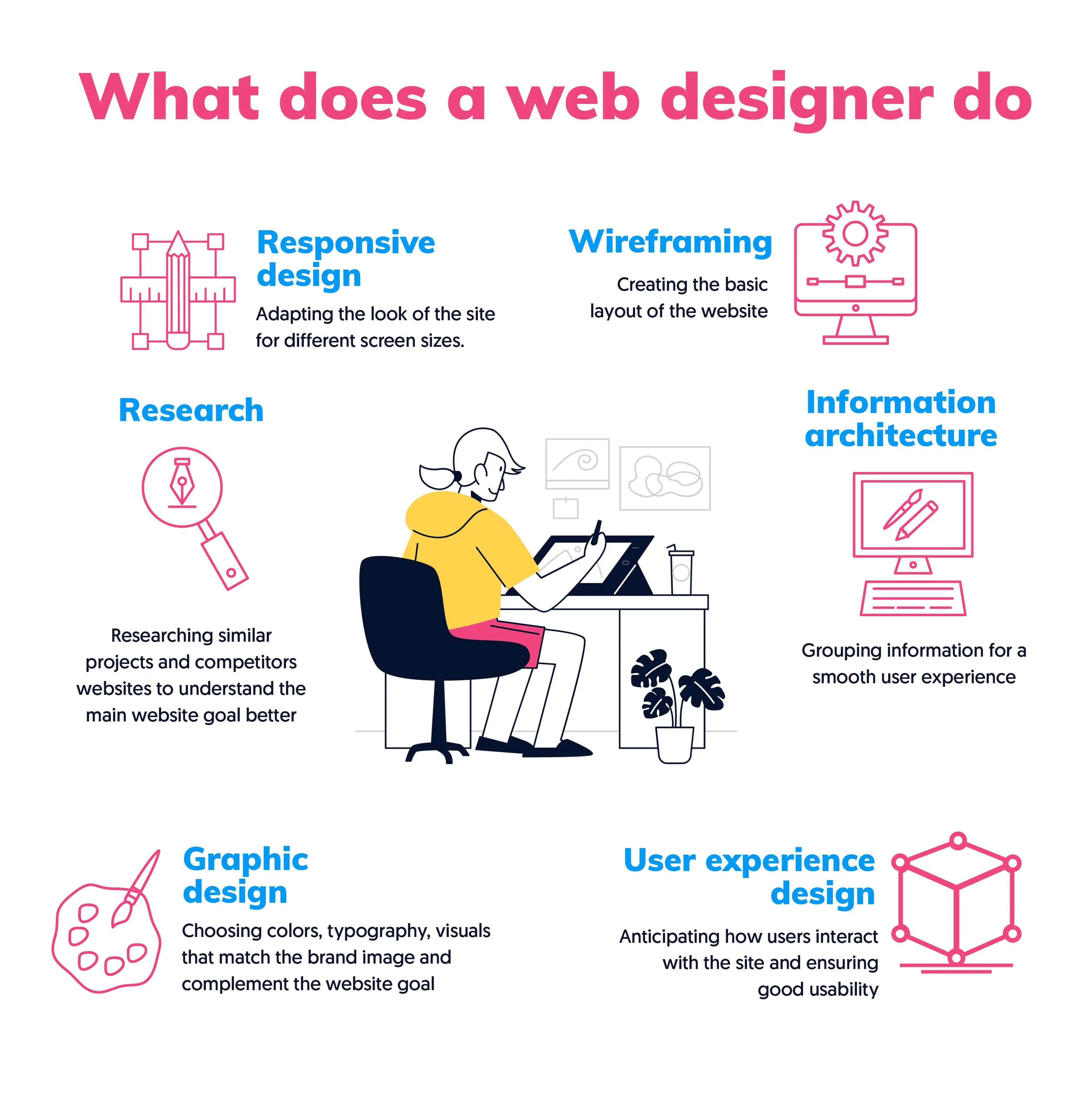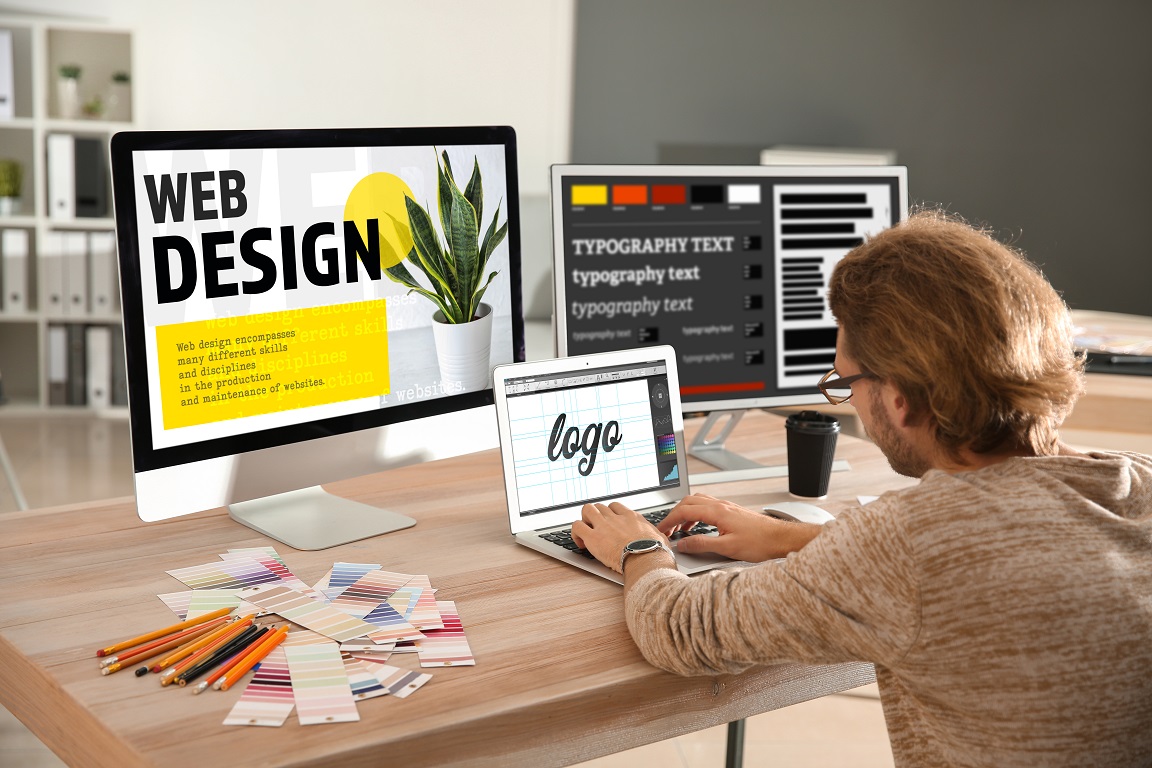Exploring the most recent Patterns in Cutting-edge Website Design Methods
In the swiftly advancing world of website design, innovators continuously make every effort to enhance the customer experience. Current trends point towards the merging of minimalistic looks with vibrant visuals, while likewise dealing with the needs of different devices through mobile-first and receptive styles. The consolidation of AI and artificial intelligence offers personalized interfaces, while the subtle addition of micro-interactions contributes to the instinctive feeling of sites. However, the full implications of these trends are yet to be fully recognized.
Welcoming the Power of Dynamic Visuals in Web Design
Submersing individuals in a trip of dynamic images, the power of vibrant visuals has actually transformed the world of website design. The electronic canvas has been changed into a playground where designers fluidly express principles, emotions, and narratives. These visuals surpass mere visual appeals, enhancing user interaction and communication.
Dynamic visuals incorporate a broad variety of strategies - Web Design In Guildford. From interactive infographics to online truth experiences, the spectrum is large and consistently broadening. These components work as powerful tools that assist brand names connect complex information in a digestible and appealing manner
In addition, 3D graphics and computer animations are increasingly leveraged to give a more immersive, multi-dimensional surfing experience. Such compelling visuals ignite user passion, encouraging exploration, and fostering connection with the brand.
Essentially, vibrant visuals have actually become an essential element in internet layout, dramatically affecting user experience and communication. They have improved digital storytelling, offering a fascinating mix of creative thinking and modern technology.
/web/web-design-trends-2020-z5311.jpg)
The Increase of Minimalistic Layouts: Less Is Even More
While dynamic visuals provide an immersive and interesting experience, a different trend in website design has gotten considerable grip - the rise of minimalistic layouts. This approach, based in the ideology that "much less is extra," stresses simplicity and performance over complexity. It gets rid of unneeded aspects, concentrating on crucial material.
Minimalistic styles are not simply aesthetic options. They additionally improve the individual experience by improving site lots times and making navigating user-friendly. In a period where user focus periods are decreasing, offering clear, clean interfaces can effectively hold site visitor focus, causing raised engagement.
In addition, these styles align with the mobile-first strategy, as they adapt well to smaller sized screens. They also offer a sense of modernity and expertise, commonly appealing to target markets seeking simple information. Undoubtedly, the rise of minimalistic designs notes a change in the direction of user-centric design, prioritizing simplicity of use and performance over extreme aesthetic allure.
The Influence of AI and Artificial Intelligence in Internet Site Development
As the electronic landscape proceeds to advance, Artificial Knowledge (AI) and Machine Understanding (ML) have begun to play a pivotal role in website production. These technologies have revolutionized the sector, changing exactly how websites are made and created. AI and ML can now automate intricate tasks, minimizing human mistake and increasing effectiveness.
AI-driven style platforms can generate design components based on customer information, developing tailored experiences that hold the possible to improve engagement and conversion prices. ML, on the other hand, can evaluate internet site efficiency and user actions, offering understandings that assist developers make data-driven improvements.
Nonetheless, despite these benefits, it's vital to comprehend that AI and ML are tools meant to help, not replace, human designers (Web Design In Guildford). Their true power lies in their capability to augment human creativity and problem-solving abilities, causing the production of more reliable, user-centric websites
The Importance of Receptive and Mobile-First Style
The change in the direction of mobile technology has required a dramatic change in internet layout approaches. Receptive layout and mobile-first design have arised as vital strategies to meet the demands of this shift.
Receptive website design guarantees that an internet site's layout and material respond properly to the tool on which it is seen. Web Design In Guildford. This approach enhances individual experience by making sites accessible across a wide variety of devices, from desktop computer displays to cellphones
On the other hand, the mobile-first design method starts by creating for the tiniest screen and considerably boosting the layout for bigger displays. This method acknowledges the primacy of mobile browsing and ensures an ideal viewing experience for the largest number of customers.
Making use of the Possible of Micro-Interactions for User Involvement
Ever before asked yourself why specific internet sites take page care of to engage users much more effectively than others? The secret typically hinges on using micro-interactions. Micro-interactions are subtle design content aspects that happen in action to individual habits, such as a button changing color when floated over, or a computer animation that plays while a page is loading.
These little, virtually unseen information can dramatically improve the customer's experience by giving feedback, guiding tasks, and making the interface feel active. They can transform an ordinary task into an enjoyable, appealing experience, thus boosting individual involvement and complete satisfaction.

Conclusion
To conclude, cutting-edge internet layout strategies are regularly advancing. The most up to date patterns stress vibrant visuals, minimalistic layouts, AI and machine discovering, mobile-first and responsive design, and micro-interactions. These aspects not just boost the individual experience yet also deal with diverse gadgets, produce personalized user interfaces, and boost user retention. As modern technology continues to development, these patterns are most likely to form the future of internet style, making it much more appealing and intuitive.
In the swiftly developing world of web design, trendsetters consistently make every effort to improve the user experience.Immersing customers in a journey of vivid imagery, the power of vibrant visuals has transformed the world of web style.While dynamic visuals provide an immersive and interesting experience, a contrasting fad in internet style has acquired substantial traction - the rise of minimalistic styles. The rise of minimalistic designs marks a change in the direction of user-centric style, focusing on convenience of usage and performance over excessive visual allure.
